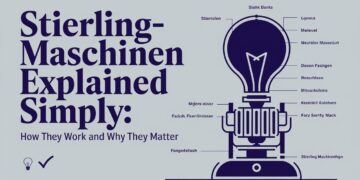In the dynamic world of manufacturing, warehousing, and distribution, efficiency and adaptability are paramount. Palletizing – the process of stacking products onto pallets for storage or transportation – is a critical operation that directly impacts a company’s productivity and bottom line. Two primary technologies dominate this space: conventional layer style palletizers and robotic palletizers. Understanding the key differences between these systems can help businesses in Australia and New Zealand make informed decisions to optimise their operations.
Conventional Layer Style Palletizers
Conventional layer palletizers have been the cornerstone of palletizing operations for decades. They are mechanical systems designed to handle high-speed palletizing of uniform products, making them ideal for industries with consistent product lines.
Advantages
High Throughput: These palletizers are engineered for speed, capable of handling up to three layers per minute. This high throughput is essential for industries requiring rapid palletizing of uniform products like cases, trays, and crates.
Mechanical Simplicity: Utilizing straightforward mechanical components and movements, conventional palletizers offer reliable performance and are generally easier to maintain. Their electro-mechanical operation is controlled by PLC systems, ensuring consistent and precise stacking.
Cost-Effective for Uniform Products: For businesses dealing with a single SKU or product type, conventional palletizers provide an efficient and cost-effective solution.
Limitations
Less Flexibility: These systems are typically optimized for specific product sizes and configurations. Adjusting to different product types may require mechanical changes and tool-free changeovers, leading to downtime.
Space Requirements: Conventional palletizers often have a larger footprint due to their mechanical nature, which may be a concern for facilities with limited space.
Limited Adaptability: In an environment where product lines frequently change, conventional palletizers may struggle to keep up without significant adjustments.
Alt text: Robotic palletizer with articulated arm efficiently handling diverse product sizes in a modern facility.
Robotic Palletizers
Robotic palletizers represent the evolution of palletizing technology, offering unparalleled flexibility and adaptability through advanced robotics. Utilizing articulated arm robots from industry leaders like ABB Robotics, these systems are designed to meet the diverse needs of modern businesses.
Advantages
Versatile Handling: Equipped with robotic arms and specialized end-of-arm tooling, robotic palletizers can handle a variety of products, sizes, and pallet patterns without extensive reconfiguration. Whether dealing with bags, cases, crates, or even bottles and cans, these systems adapt with ease.
Easy Programming: Adjustments for new products or pallet patterns can often be made through software updates or touchscreen interfaces, reducing downtime and increasing operational flexibility.
Space Efficiency: With a more compact design, robotic palletizers are suitable for facilities where space is at a premium. They integrate seamlessly into existing production lines, maximizing the use of available space.
Future-Proofing: Their adaptability makes robotic palletizers a scalable solution that can evolve with your business needs. As your product lines expand or change, the robotic system can be reprogrammed to accommodate new requirements.
Additional Benefits
Reduced Labour Costs: By automating repetitive and physically demanding tasks, robotic palletizers reduce the need for manual labour, leading to cost savings.
Enhanced Safety: Automation minimizes the risk of workplace injuries associated with manual palletizing, such as repetitive strain injuries and handling accidents.
Improved Product Integrity: Advanced motion software ensures smooth and precise handling, significantly reducing the risk of damage to sensitive products.
Considerations
Initial Investment: The upfront cost for robotic systems can be higher compared to conventional palletizers. However, the long-term benefits often outweigh the initial expenditure.
Maintenance Requirements: While robotic systems are designed for durability, they may require specialized maintenance to ensure optimal performance.
Key Differences Between Conventional and Robotic Palletizers
Flexibilit
Conventional Palletizers: Best suited for uniform products and fixed pallet patterns. Adjustments require mechanical changes.
Robotic Palletizers: Offer high flexibility, capable of handling multiple SKUs simultaneously and adapting to various products and pallet configurations with minimal downtime.
Speed and Throughput
Conventional Palletizers: Provide higher throughput for uniform products, making them ideal for high-volume, single-product lines.
Robotic Palletizers: While slightly slower in throughput, they compensate with versatility and the ability to handle multiple products.
Space and Footprint
Conventional Palletizers: Typically require more floor space due to their mechanical components and layout.
Robotic Palletizers: Compact design allows for efficient use of space, which is beneficial for facilities with limited room.
Adaptability and Future-Proofing
Conventional Palletizers: Limited adaptability can be a drawback in industries with frequently changing product lines.
Robotic Palletizers: Easily reprogrammable, making them suitable for businesses anticipating growth or diversification.
Cost Implications
Conventional Palletizers: Lower initial investment but may incur higher costs over time due to lack of flexibility and potential downtime.
Robotic Palletizers: Higher upfront cost but offer long-term savings through reduced labour, increased efficiency, and adaptability.
Which Palletizer is Right for Your Business?
Choosing between a conventional layer style palletizer and a robotic palletizer depends on several factors:
Product Uniformity: If your production involves high volumes of uniform products, a conventional palletizer might be the best fit.
Product Diversity: For operations handling multiple SKUs or requiring frequent changeovers, a robotic palletizer offers significant advantages.
Space Constraints: Facilities with limited space may benefit from the compact design of robotic palletizers.
Budget Considerations: While robotic palletizers require a higher initial investment, they can provide cost savings over time through efficiency gains.
Future Expansion: If your business plans include expanding product lines or adapting to market changes, the flexibility of robotic palletizers can provide a competitive edge.
For businesses in Australia and New Zealand, companies like PHS Innovate offer comprehensive palletizing solutions tailored to meet specific operational needs. Whether you choose a conventional or robotic system, partnering with experts ensures that your palletizing equipment integrates seamlessly with your existing processes.
Conclusion
Both conventional layer style palletizers and robotic palletizers play vital roles in modern industrial operations. Understanding their key differences enables businesses to align their palletizing strategies with operational goals, ensuring optimal performance, safety, and return on investment.
Investing in the right palletizing technology is more than a capital expenditure; it’s a strategic decision that impacts productivity, employee well-being, and customer satisfaction. You can select a palletizing solution that drives your business forward by carefully evaluating your needs and consulting with industry professionals.
For further insights and advanced palletizing equipment options, exploring resources from industry leaders can provide valuable information to guide your decision-making process.
Meta Title: Conventional Layer vs. Robotic Palletizers: Understanding the Key Differences
Meta Description: Explore the key differences between conventional layer-style palletizers and robotic palletizers to make an informed decision for your business operations.



















































